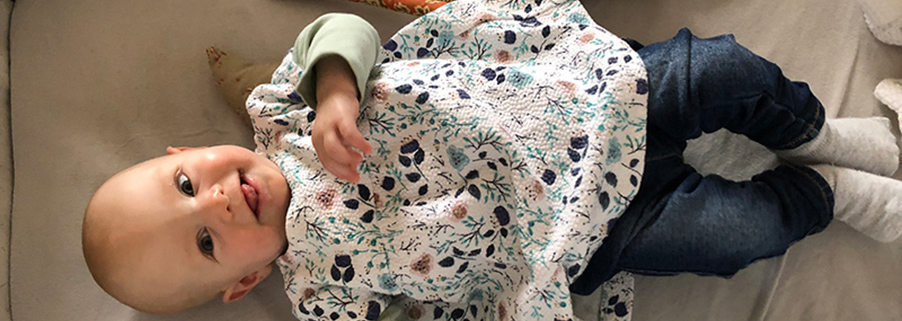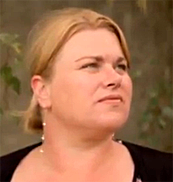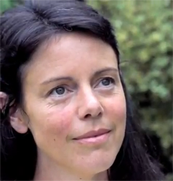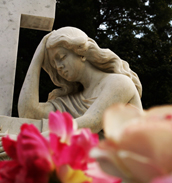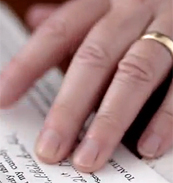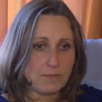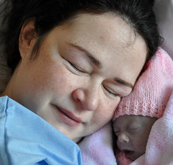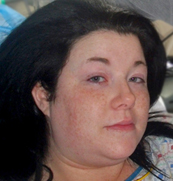Hope Atherton
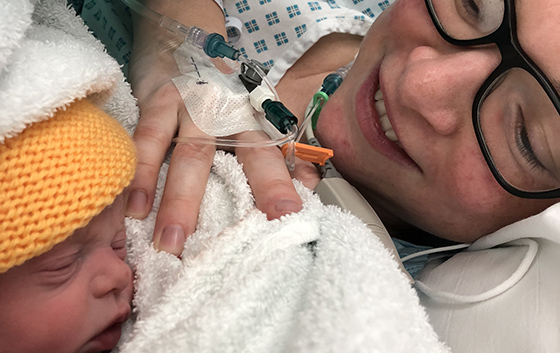
Carrying my baby Hope
Beth and Paul Atherton's little baby girl was diagnosed in utero with Trisomy 18. It was only when Hope was born that it was realised that it was the placenta that had Trisomy 18, Hope was not affected.
You never think it’ll happen to you. Until, of course, it does.
It was the phone call I’d been waiting for. The first test results will come back in a week, they’d said, the others can take up to two. It’d been exactly a week and I was ready to hear that everything had registered negative so far and there was nothing wrong with the baby. Yes, she’d measured small on the 20-week scan, with an echogenic bowel, but all of that could mean nothing… or something very serious.
I was unpacking the food shop when I answered the call.
‘Is now a good time? Would you like to know the results?’
‘Yes! Yes, I’ve been waiting.’
‘Your baby has a 95% chance of having Edwards’ syndrome,’ the screening coordinator said. ‘It’s so rare, I’ll just have to read the information to you.’ |
Hearing the news
My children, a four-year-old girl called Mary Joy and a two-year-old boy called James, started squabbling and I pleaded with them to stop it, just for five minutes so I could hear the news.
‘Your baby has a 95% chance of having Edwards’ syndrome,’ the screening coordinator said. ‘It’s so rare, I’ll just have to read the information to you.’
As she explained the devastating impact of having this particular extra chromosome, I started to remember friends of mine in the US, who’d had a baby with Edwards’ syndrome. His name was Hudson. He’d lived for eight hours and they’d celebrated every moment they got with him.
I wanted to end the call… google more info… call my husband, Paul. Should I wait until he was home from work to process together? As a doctor, he might understand the full connotations of what this meant and the news might ruin the rest of his working day. I couldn’t wait – I couldn’t keep this to myself. I burst into tears before I could get the words out to tell him, upsetting my daughter so much I had to stop and calm down.
‘It’s Edwards’ syndrome,’ I told Paul, ‘the baby might not live.’
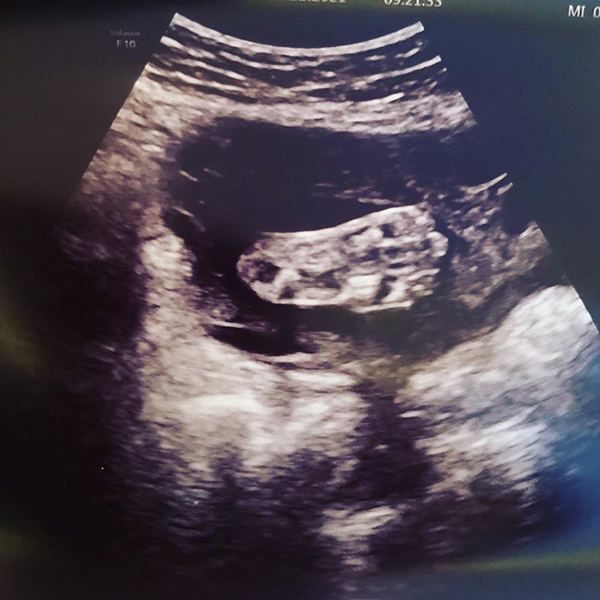
Our Precious Child
- - - - - - - - - - - - - - - - - - - - - - - - - - - - - - - - - - - - - - - - - - - - - - - - - - - - - - - - -
We were offered another scan a few days later. Sitting in the waiting room felt like being in a level of hell: building anxiety as our worst fears danced around us and time dragged on and on. After a half-hour scan in total silence, having no idea what the pictures on the screen meant, the fetal medicine consultant told us matter-of-factly that our baby was too small to survive, and she fully expected her to die in the womb or shortly after birth.
There was no cushioning the news; no ‘I’m sorry to have to tell you this’, or ‘This will be hard to hear’. She reeled off a list of things that were wrong, including a chest too small to allow the lungs to fully develop, very little amniotic fluid, and the fact that the baby was still curled up was clearly a bad sign. Our world was crumbling as she spoke, our anticipated future of having a third child disintegrating before us. Meanwhile, we were being bombarded with decisions we’d need to make: whether or not to continue the pregnancy; when and how to deliver the baby; what medical interventions were to be offered after birth if needed; whether to consider using the services of a hospice.
I shut down, overwhelmed and drowning. Having a baby die seemed like the worst possible scenario and I couldn’t take it in. She felt so alive to me and yet here we were, being presented with the likelihood of her imminent death. Even the way the consultant communicated the news seemed to deny the humanity of the baby I was carrying in my womb and whom I’d felt move since 14 weeks. Would you tell a parent one of their children had inoperable cancer with so little compassion? We were told we could choose to terminate the pregnancy at any point up to birth, as if that were a reassurance. I was unable to sleep that night, feeling my whole being had been shattered into tiny pieces; pieces that might never fit together again.
The next few days were filled with the exhaustion of telling our family and friends – all incredibly supportive and loving, but equally as devastated. Explaining to our children that this baby in Mummy’s tummy might not come home from the hospital but might go straight to live with Jesus in heaven. We received cards and flowers and vouchers and presents from friends, wanting to show their support however they could, and I came to learn the importance and value of presence: often you just need someone to be with you, sometimes talking about the devastating news and sometimes not. I was so grateful we were out of lockdown and people could come to visit. I came to appreciate there isn’t a ‘right thing’ to say but that reaching out and saying anything shows care - just ‘I’m so sorry’ can be all that’s needed. There were times I wanted to pretend this wasn’t happening and my life was normal. I was grateful my children kept me so busy and distracted that I couldn’t contemplate the expected future very often or camp out in my distress.
We were offered another scan a few days later.Sitting in the waiting room felt like being in a level of hell: building anxiety as our worst fears danced around us and time dragged on and on. |
Despite the cruel combination of relentless morning sickness, movement limiting pelvic pain, hypersalivation and intense thirst, we never considered termination an option. I was determined to carry this baby as long as she lived and, like Hudson, celebrate every day: every movement was a gift to signal she was still alive. At this point, we didn’t know the gender because we’d found out during the first two pregnancies and I’d wanted my last baby to be a surprise. Paul wanted to know after we’d gotten the news, to allow him to bond more closely with the baby, but I didn’t want to. I knew it’d break my heart to imagine in more detail the child we were told we’d lose and I thought the announcement of the gender could be a positive moment at a birth that might not be as joy-filled as usual.
I’d actually been reminded of a story in the Bible of a king whose son becomes gravely ill, and he fasts and prays until he hears of his death. I felt this was a model for us - to pray while the baby lived and only grieve once she’d died. With my head, I was making all the necessary preparations but in my heart, hope could not be crushed. Late one night, while my whole household slept, I wept and pleaded silently with God for life for this baby. Weary with longing, I lay my head on my arms on the kitchen table, knowing God knows what it feels like to lose a child and that He would be with us whatever happened.
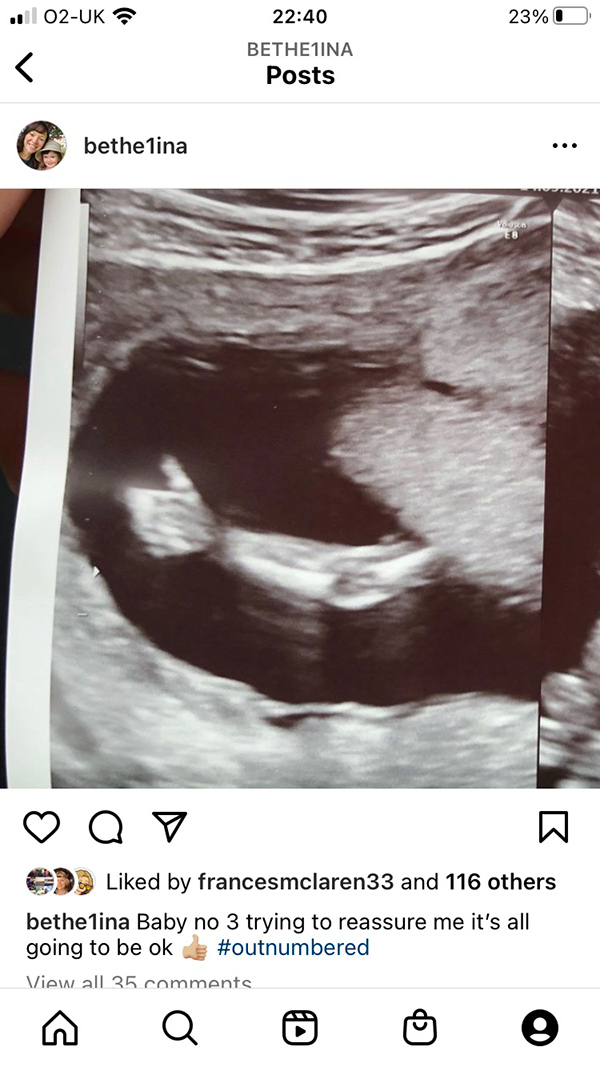
We got in touch with the nearest hospice and the compassion they offered felt like being enveloped in a warm embrace.
‘First of all, congratulations on this pregnancy,’ the community nurse said. After she’d talked through all the hospice offered, from memory making items, to end of life residential care, to ongoing counselling, I wondered if maybe this would make the experience less devastating than I’d first thought. We’d be taken care of and navigated through this overwhelmingly distressing event so I could just focus on the baby for the precious amount of time we had with her. Our children weren’t allowed to visit in the hospital but all of our family would be able to come into the hospice’s garden. The thought of our extended family getting to meet the baby alive meant so much to me, because then she’d be as real to them as she was to me. They’d always have a memory of holding her and she’d always be a part of the family.
Finding out at the end of conversation, when I gave my address, that we were just out of their catchment area, broke through the defences I had built against my emotions and I was too upset to speak to end the call.
The thought of our extended family getting to meet the baby alive meant so much to me, because then she’d be as real to them as she was to me |
Connecting with other families
Incredibly, that community nurse fought for us to be given special consideration and they accepted our case. I will always be grateful for that – the comfort of knowing we’d have a place for our whole family to be together and be cared for when the worst happened, and the counselling they would offer afterwards. I also met a mother whose son Gabriel had lived for three months, and heard all about his precious life. Through SOFT UK, we found other families going through exactly the same situation and a monthly online call with them allowed us to share our painful journeys very closely. I also got in touch with a charity in Ireland called Every Life Counts who were very supportive and helped me write a birth plan, both for a still birth and a live birth. They sent a box with tiny baby sleep suits and gifts for the baby, recognising her as a precious little life and not a medical issue.
Our next scan was with a different consultant who, surprisingly, had a contrasting opinion. ‘This baby looks like a normal baby to me,’ she said, ‘just a very small one.’ She explained that the NIPT/SAFE blood test we’d had is a screening test, not a diagnostic test, and we’d only know for sure if we had an amniocentesis. I didn’t want to take the risk of miscarriage this procedure presented so we turned it down, but we did take up the offer of a scan in a more specialist hospital. Could the results be wrong? Were we dealing with something completely different?
On Christmas Eve, we drove up to North Yorkshire to stay with my in-laws for Christmas, and after a day of packing while watching two preschoolers coupled with the long drive up, I realised I’d not felt movement all day. It was an awful moment as I wondered if the baby had died. I decided not to tell anyone, I didn’t want to ruin Christmas and forever mar the day. I decided I would wait until Boxing Day to tell Paul, and then we could decide whether to drive straight back home or find a local hospital to check if there was a heartbeat. Sitting in church on Christmas Day, the baby suddenly started to move vigorously and I cried with joy, grateful for the best present I could have received – the knowledge she was still with us.
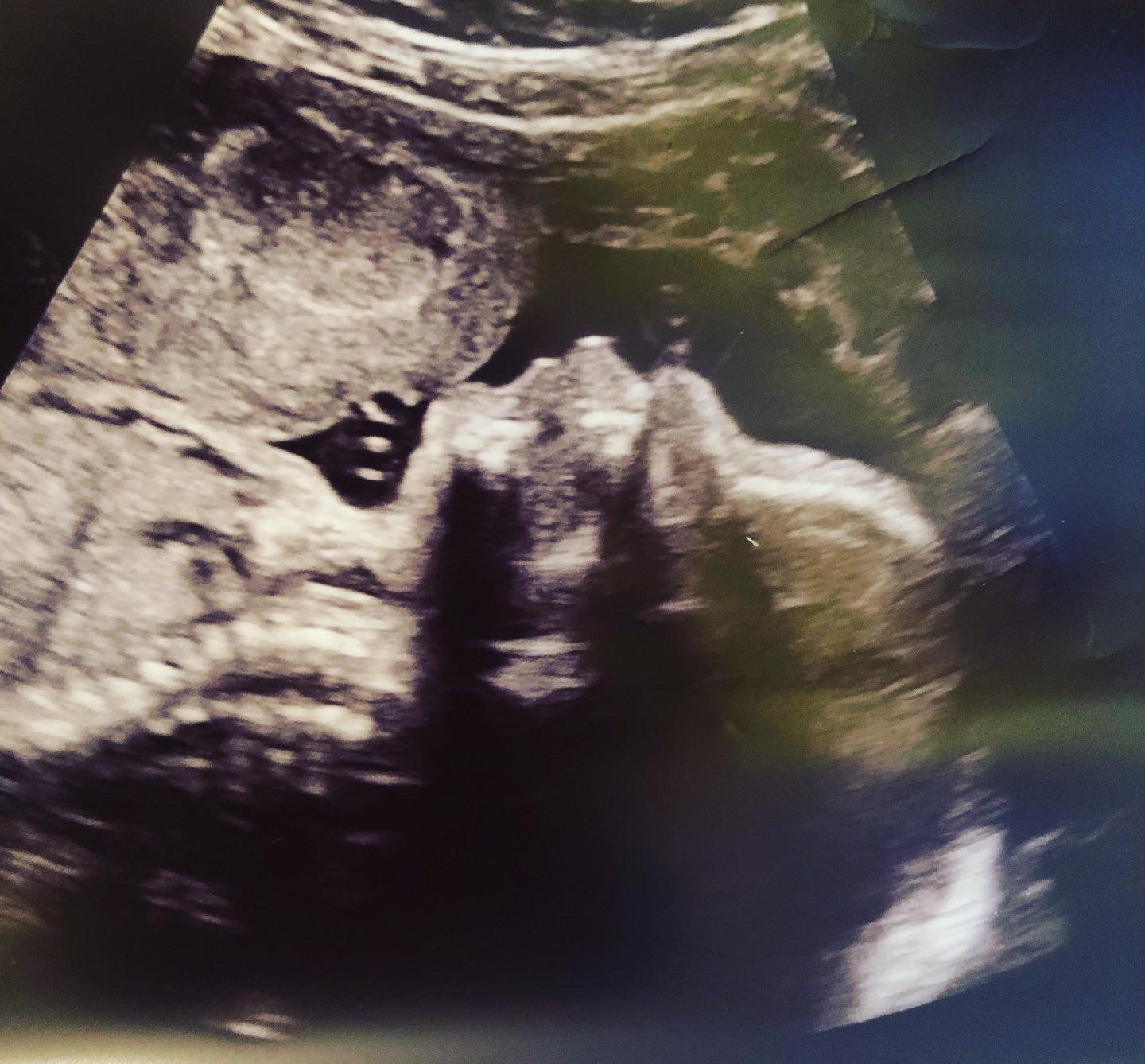
We named her Hope
- - - - - - - - - - - - - - - - - - - - - - - - - - - - - - - - - - - - - - - - - - - - - - - - - - - - - - - - -
In the new year, the pastor of our church drove us to the specialist hospital. Would we find out whether this baby had the genetic condition or not? We’d come to see the Professor, an expert in this field, and we were slightly taken aback with his opening question: ‘You’ve already seen two consultants; why have you come to see a third?’ It was an effective way to make us feel defensive and on the back foot. Scans can make you feel vulnerable and exposed as you’re the only person in the room lying down, with normally covered up flesh exposed. The knowledge the consultants hold and their ability to interpret the black and white images on the screen affords them all the power in the room. Also, the baby in your womb is yet to have its own separate identity from yours and to some extent feels part of you, so it can be very personal and hurtful when words are spoken against them.
I also got in touch with a charity in Ireland called Every Life Counts who were very supportive and helped me write a birth plan, both for a still birth and a live birth. |
The Professor’s manner however was warm and friendly as he took over the scan from a member of his team, zooming in on our baby’s heart to show narrowing of a valve, which he told us was pulmonary stenosis. This medical issue would be operated on if the baby didn’t have a genetic condition but, left untreated, could cause heart failure. Another issue seemed to be in her mouth – an incomplete circle indicating the likelihood of a cleft palate. She’ll never be able to feed orally. All of this confirms the diagnosis, he affirmed, and anyway, even without the big structural defects, babies with Edwards’ don’t survive because nothing works as it should – their hormones don’t function correctly, and nor do their enzymes. It was like he was trying to convince us there was no hope, prove the diagnosis was correct and minimise our expectations. Over and over I was shocked at how little care would be offered to babies with this condition, almost as if it’s a waste of resources to prolong their lives or offer treatment for treatable ailments if they have a life limiting condition.
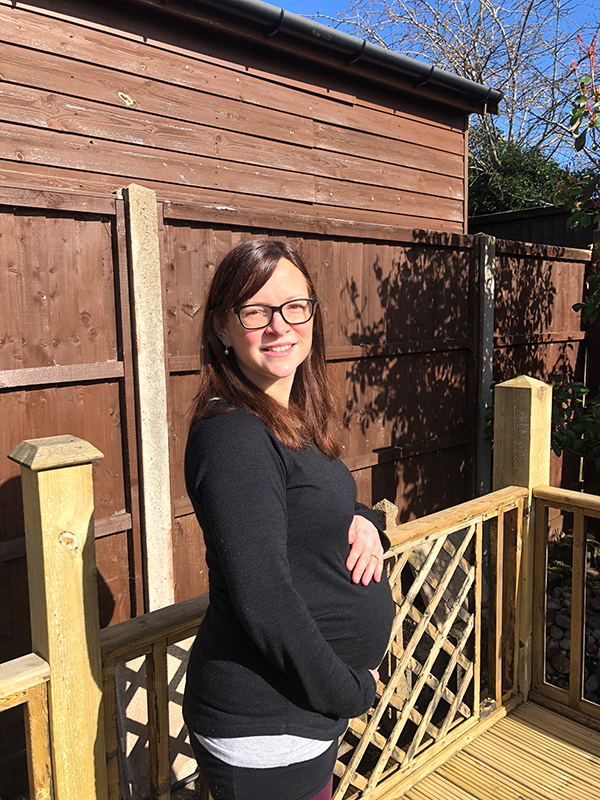
Every moment with Hope was treasured
- - - - - - - - - - - - - - - - - - - - - - - - - - - - - - - - - - - - - - - - - - - - - - - - - - - - - - - - -
Meeting our daughter
From then on, we continued to pray and celebrate every day, every movement, but we made plans as if this baby would be with us for only a very short period of time. We planned a C-section at 37 weeks, hoping that’d give her a better chance of being born alive than enduring labour and natural birth. We shielded for two weeks before, knowing that if my husband tested positive for covid, he’d not be allowed to be present at the birth and therefore might not meet our baby alive. I bought a range of tiny baby outfits and arranged for a photographer to be there so that no matter what happened, we could have family photos of us all together. My parents moved in with us for a while to provide childcare and support, and wider family were poised to visit after the birth.
I had regular scans towards the end of the pregnancy, wondering if these would be the only times we’d see our baby alive, and a few days before the planned birth, I had an inclination the movements had changed. A CTG (cardiotocography, which records the fetal heart rate) that afternoon picked up a few significant decreases in the baby’s heart rate. I messaged my husband saying I didn’t want to go home… I was worried she’d die over the weekend before the planned birth. When the doctor offered an emergency C-section as soon as my husband could get to the hospital, I readily agreed.
It was 7pm on a Friday evening in late February. It was my dad’s birthday and we’d planned to order in a curry. That never happened. Our church family hosted an online prayer meeting as we entered the operating theatre and I felt strangely calm. This was the moment we’d been waiting for, the big reveal. How long would we have with her? Would she live long enough to make it to the hospice to meet her brother and sister? Our best case scenario at that point was to have a disabled child with complex medical needs who lived up to a year. We had no idea what was to come…
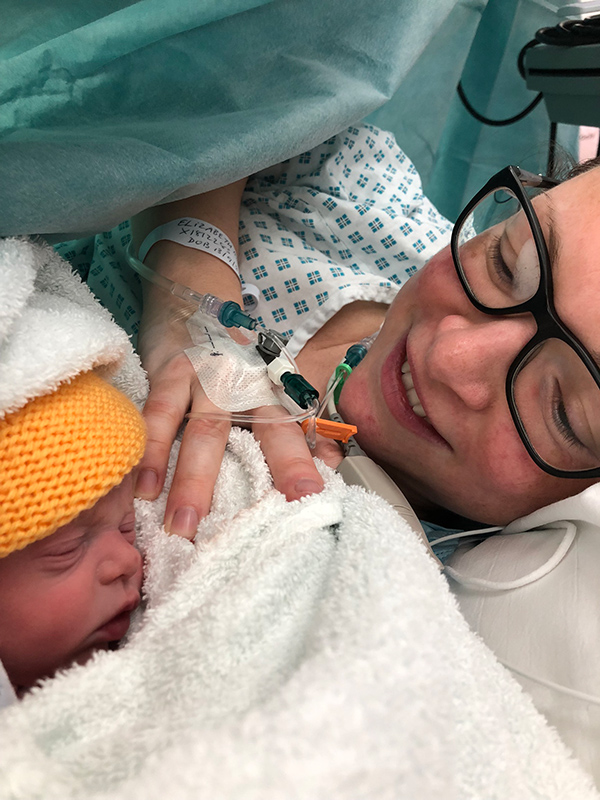
Meeting our precious Hope
- - - - - - - - - - - - - - - - - - - - - - - - - - - - - - - - - - - - - - - - - - - - - - - - - - - - - - - - -
Our baby daughter came out pink, breathing by herself and crying heartily. There was no cleft palate and no heart murmur to indicate pulmonary stenosis. It was like the most incredible dream, a daydream I’d once had where she looked so healthy at birth and cried so loudly that everyone in the room knew she was well. This was not the kind of baby we’d been led to expect. We burst into tears as the paediatrician brought her round to us, saying that as she seemed so healthy, with an APGAR score of 9/10, we needed to throw the Do Not Resuscitate plan out of the window. She was 1.75kg, 3lbs 14oz, and was soon taken to SCBU (Special Care Baby Unit). That night I spent alone in the delivery ward’s High Dependency Unit after a bleed, experiencing intense pain and incredible joy and gratitude, all at the same time. She was alive! Alive and seemingly well! Her name is Hope, we announced. Hope Elizabeth.
The days that followed were a bit more sobering as we were told she was developing markers for Edwards’ and that she might have a mild form of it or another genetic condition altogether. I wondered again if our time with her was limited, waiting and watching for her to start having apneas (episodes when she stopped breathing), knowing how those increasing in frequency and duration would signal the end. We talked about how we’d cope as a family, bringing home a disabled child with unforeseen needs. I slept every night on a camp bed in her bay in SCBU, not wanting to lose any time with her as our church provided us with meals, lifts back and forth to the hospital and all sorts of other help. Other than the usual needs of tiny babies though, Hope still wasn’t displaying any other medical complications.
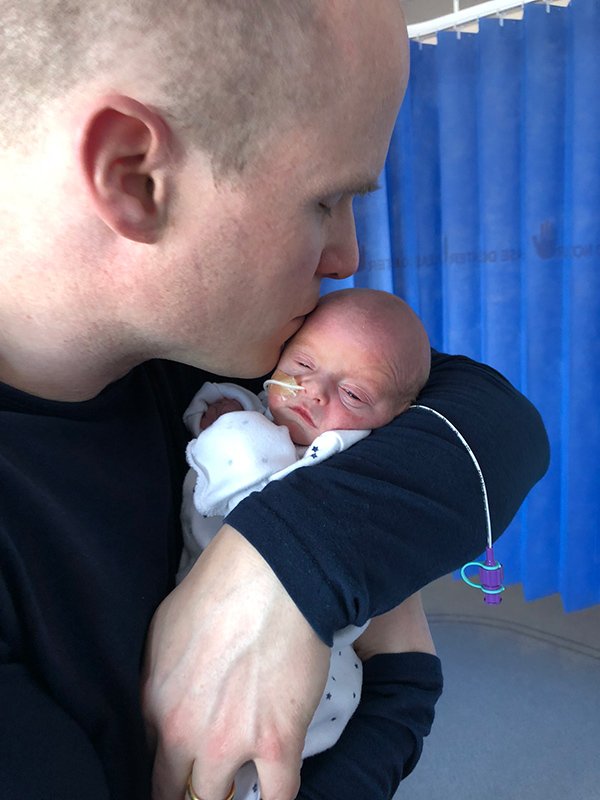
Meeting Daddy
- - - - - - - - - - - - - - - - - - - - - - - - - - - - - - - - - - - - - - - - - - - - - - - - - - - - - - - - -
A week after she was born, her paediatrician sat us down for the first set of results from genetic testing. ‘Hope does not have the full form of Edwards’ syndrome,’ he assured us. Our world and our expected future had changed again…
A geneticist visiting our local hospital from the specialist one had a cancellation the next day and was able to check Hope over and talk with us. She explained that the blood test we’d had had picked up cell free DNA in my blood stream only from the placenta, not from the baby. She drew a diagram to show how the full version of a genetic condition affects every cell in the body but there’s a mosaic version, where only some cell lines have the extra chromosome. She went on to say that in rare cases, the cells with the extra chromosome are confined to the placenta and are not in the baby at all.
‘Not in the baby at all…’ This phrase started to sink in. Hope could have no level of Edwards’ at all. It was like a light dawning; the hope we’d clung to of having some time with her expanding and flooding the room as we realised there might be no limits on our time with her, nothing stopping her from leading a full and healthy life. The geneticist explained confined placental mosaicism would lead to placental deficiency resulting in a very small baby like Hope, and the risk of placental failure at the end of pregnancy, hugely increasing the risk of a still birth. We were deeply shaken to realise how close we could have been to losing her and grateful the hospital had responded so swiftly.
In the days that followed we scrambled to get our house ready again for a newborn, grateful beyond words that we were bringing her home, a baby we’d get to see grow up. The care in SCBU was exemplary, where she was tube fed for twelve days, and then we managed to establish bottle and breast-feeding at home. Good news followed good news when further test results didn’t pick up any affected cells in her blood stream at all. Nine months on, she continues to meet all the developmental milestones at the pace of a small baby. She’s rolling over, sitting up, loves food and playing with hair, she sucks her fingers and smiles and laughs at interactions with her siblings who love her very much.
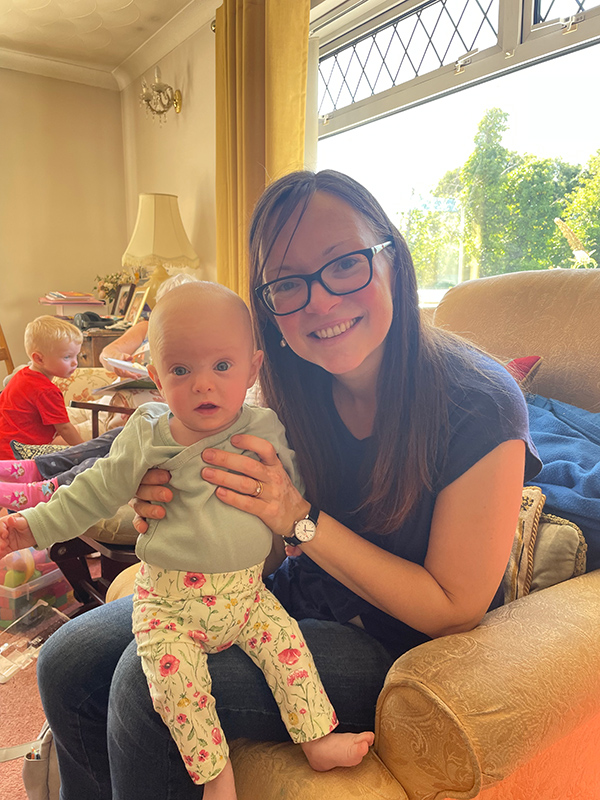
Every day feels almost unbearably precious, the disturbed nights a joy as we get to hold Hope in our arms. I find myself incredibly protective towards her, as if the world had tried to eradicate her before she’d even been born, but we fought for her, in prayer and in the decisions we’d made. For a while I was haunted by the offered option of termination but when I brought it before God in prayer, I felt Him reassure me, ‘That was why I chose you to be her parents.’
She is a delight and will always be our little miracle.
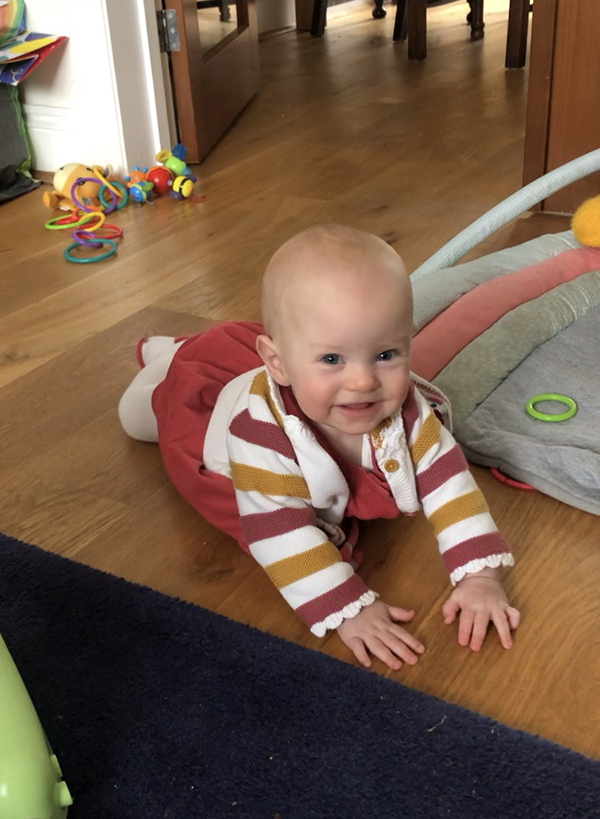
‘Not in the baby at all…’ This phrase started to sink in.Hope could have no level of Edwards’ at all. |
- - - - - - - - - - - - - - - - - - - - - - - - - - - - - - - - - - - - - - - - - - - - - - - - - - - - - - - - -
TRISOMY 18 or EDWARD's SYNDROME arises because of the presence of an extra chromosome. There is a significant risk of miscarriage before birth, but, quite contrary to recent reporting, studies have found that the average duration of survival for children who lived until birth with Trisomy 18 was 14.5 days; with 39% of babies surviving for more than a month, while 8.4% survived for more than a year.
Rasmussen SA1, Wong LY, Yang Q, May KM, Friedman. Pediatrics. Population-based analyses of mortality in trisomy 13 and trisomy 18. 2003 Apr;111(4 Pt 1):777-84.JM. http://www.ncbi.nlm.nih.gov/pubmed/12671111
Links
|

